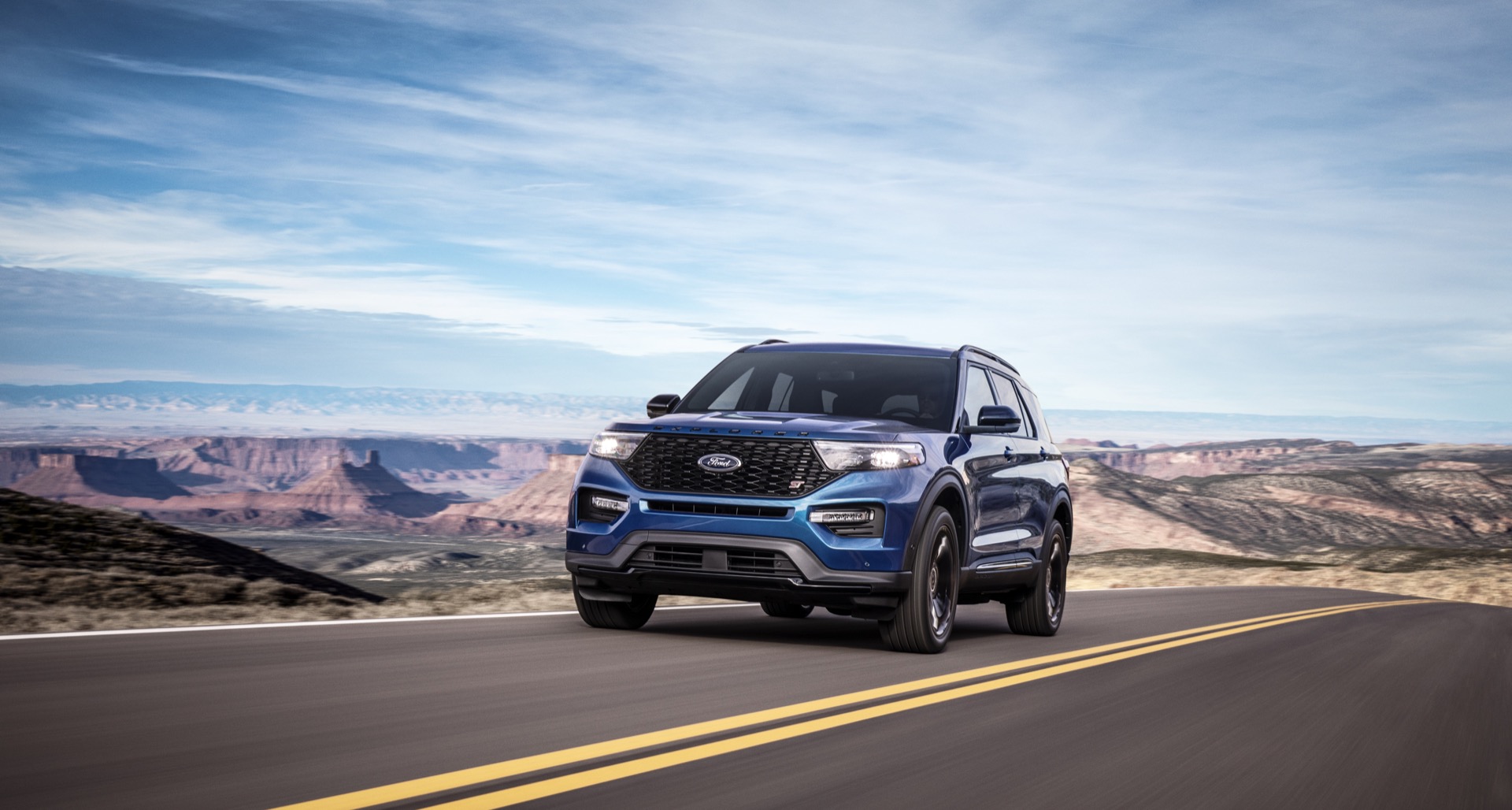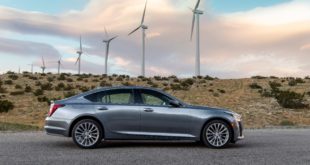
The 2020 Ford Explorer lineup consists of base (Explorer), XLT, Limited, Limited Hybrid, Platinum, and ST models. The majority of Explorers will come with a base 2.3-liter turbo-4 that makes 300 hp and 310 lb-ft of torque. Limited Hybrid versions step up to a naturally aspirated (non-turbo) 3.3-liter V-6, as part of a modular-hybrid 10-speed automatic transmission setup, that makes 318 combined hp and 322 lb-ft. Platinum versions get a 3.0-liter turbocharged V-6 that makes 365 hp and 380 lb-ft.
We rate the 2020 Ford Explorer at 7 out of 10 points for its excellent ride and handling and well-rounded set of capabilities, including towing and off-roading.
Of the two non-hybrid engines our pick is probably the base turbo-4, which provides a lighter, more nimble feel overall while feeling just as perky at city speeds. Only at faster highway speeds (and very full loads, we would assume) does the turbo V-6 justify itself.
Both non-hybrid engines come with a stop/start system that shuts off the engine at stoplights and restarts it when you lift off the brake pedal. All models in the lineup include a suite of drive modes—Normal, Sport, Trail, Slippery, Tow/Haul, and Eco. Snow and Sand modes are added in four-wheel-drive versions.
Overall drivability of the hybrid system was disappointing at times, with its troubles most noticeable as shudders and indecision in the 15-to-40 mph range, when rolling on and off the accelerator gently. The hybrid system got better the harder we drove it; Ford engineers told us that with a conventional torque converter plus the motor, it’s calibrated to make no sacrifices to driveline shock under the rigors of towing or off-roading. One unexpected bonus is that the hybrid is the perkiest model of the whole lineup (in terms of accelerator response) at lower city speeds, where the e-motor does its best work. This hybrid system will cruise on electricity alone up to around 50 mph, but you have to drive it very gently to find it. Ford hasn’t released acceleration numbers for the Explorer lineup, but based on testing already done with the Police Interceptor version of the Explorer, the top-performing ST should easily hit 60 mph in well under 6 seconds.
Explorer ST models step up to a higher-output version of the 3.0-liter turbo that makes 400 hp and 415 lb-ft, as well as a firmer suspension tune all around. They also have a system that pipes in simulated sporty engine sounds into the cabin.
Across the board, compared to the previous generation of the Explorer and to other spacious three-row family SUVs, the new Explorer has a great ride and its ride motions feel nicely buttoned-down. It’s soft and muted, with an underlying firmness revealed if you push harder into a corner or transition, or when you barrel rapidly through major heaves or potholes. This generation of the Explorer also has fewer smaller motions in general than inside other three-row SUVs—perhaps the product of its 7-inch longer wheelbase versus last year’s model. The result is less larger-scale bobbing and bounding as well.
On the road, the Explorer handles like a lower sport wagon and is now the best, or nearly the best, in its class for handling with body motions that aren’t unsettled by tight esses or quick lane-change transitions. Brakes are reassuring and abrupt brake applications involve less of the dramatic nosedive that can be an expected part of the experience in big three-row crossovers.
It’s noteworthy that the Ford Explorer Hybrid makes no significant sacrifices off-road ability or in towing capability versus the other versions. Ground clearance remains the same, and the Hybrid is rated at 5,000 pounds for towing, versus up to 5,300 pounds for the turbo-4 and 5,600 pounds for the turbo V-6.
Review continues below



